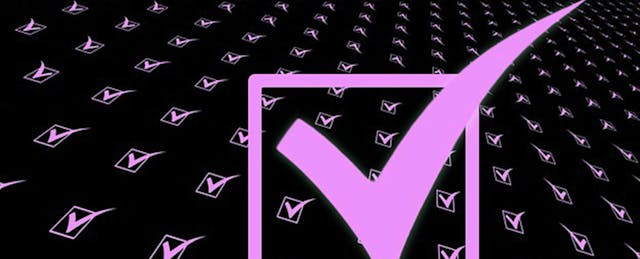Over the last few years, several educators and thought leaders have published accounts of “going blended,” from administrators like Liz Arney to the Christensen Institute’s Michael Horn. The accounts offer readers insights into how to introduce blended learning into a school system over time, sharing tools to consider and illuminating trends in what tends to support blended learning (or cause it to crash and burn in a spectacular fashion).
But, how do you know when you’re ready to go blended?
On Wednesday, April 8, a panel of four current and former educators--Jeff Kerscher and Elizabeth Rafferty of Seton Partners, Francisco Castillo-Fierro of Cristo Rey Jesuit High School in San Jose, and myself--attempted to add to these dialogues at the National Catholic Educational Association (NCEA) conference, but with something a bit more brief and list-oriented. What resulted was the following “blended learning readiness” checklist, designed to provide users with a “temperature check” as to whether their classroom, school, or district has a culture and tech stack fit to support going blended.
Where do you stack up? Take a look at the checklist below, and see what side of the spectrum you fall on.
Blended Learning Readiness Checklist
You’re probably not ready to go blended if…
____ You can’t quickly and easily articulate the problem that you’re “hiring” blended learning to solve.
____ You believe that you need to have everything perfect the first time and will struggle with pivots that may happen along the way.
____ You don’t like extensive research, and can’t put in the time to run content trials.
____ You haven’t done due diligence around infrastructure, and do not have the capacity to run or manage a network.
____ You have money to “make it rain devices,” but you don’t have a thoughtful budget allocation plan.
____ You choose devices based on what is cheap, what someone has offered to purchase for you, or what you’ve seen work for another school.
____ You haven’t planned out how you want to structure your blended learning classroom model (how students move across the room, what they have access to on their devices, etc.).
____ Your plan for professional development consists of using PD from content providers or visiting/collaborating with other blended schools.
____ Your staff culture predominantly includes people who are overconfident, overzealous, and/or reluctant to change. They aren’t hungry for feedback, or have a “we’ve always done it this way” attitude.
____ You don’t include all stakeholders (i.e. not just a school board or admins) into the blended learning implementation process.
Now, what about the opposite? You’re probably ready to go blended if…
____ You’ve identified specific concerns at every grade level grouping (K-2, 3-5, 6-8) that your blended solution will help you address.
____ You’re not afraid to fail and learn from your mistakes--even if those mistakes happen in the classroom.
____ You’ve conducted some sort of research on devices, content, culture, etc. This can include visiting schools, consulting your professional learning network, or researching other organizations online.
____ You engage teachers on what they need, the advantages/disadvantages of different programs, and run student data and evidence-based trials.
____ You’ve had a contractor check out your bandwidth, wiring, and electrical power to ensure everything works correctly. You have a some sort of resource (an external management firm, a responsive central office, etc.) that designs and manages your network.
____ You have created a budget for ongoing support, device management, etc.
____ You have vetted your devices and linked them to your instructional goals, programs, and student age/population.
____ You’ve reverse-engineered strict policies and procedures that help the blended classroom flow and maximize instructional time. You’re willing to put in two weeks at the beginning of the school year to introduce those policies to kids and make them a reality.
____ You have staff culture that is filled with reflective practitioners who crave feedback and always believe there is a better way of doing things.
____ You’ve included teachers, students, and parents into the discussion of what blended learning is, how you plan to use it effectively in your school, and garner feedback from said discussions.
How’d you do? If your checks number higher on the “not ready to go blended” list, consider what areas you should explore for growth. For example, you’ll notice that on both lists, the last two points relate to creating an effective culture on campus that can support and sustain blended learning when it gets introduced. Are both of those checked on the “not ready to go blended” list? Culture might be the big element that could make or break your blended program.
What other items would you add to this checklist? Let us know in the comments section below.
EDITOR'S NOTE: Thanks to Jeff Kerscher, Elizabeth Rafferty and Francisco Castillo-Fierro for their assistance on this article.


